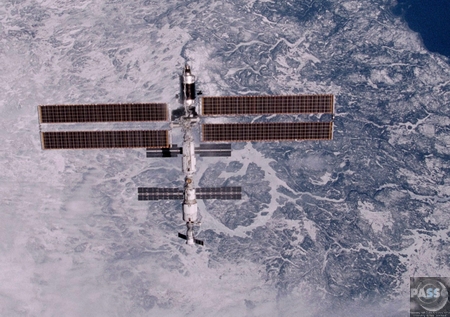|
The Enigmas on Earth |
|||
|
.
This image was
taken at an altitude of 400 km from the
ISS. The international space station was over Canada
at the time. In the
foreground the Manicouagan impact crater is visible.
|
|||
|
Manicouagan Crater, Canada .
Scientists have calculated that
the Manicouagan Crater is approximately 206 to 214
million years old. It
is one of the largest ones found preserved in
pretty good shape on Earth.
Unlike other craters found elsewhere on Earth, the
atmosphere and its eroding
have not damaged the crater significantly.
The crater itself has been measured to about 70 kilometers in diameter. However, erosion has been able to chip away the original outer rim of the crater. Scientists have been able to determine that the original rim was about 100 kilometers wide. There is a lake shaped like a ring in the crater. The impacted rock in its center which is made of metamorphic and igneous rock is more resistant to erosion than the surrounding material. It is also partly covered with impact melts and scientists have found shattered cones. Much of the information gathered helps scientists understand the process in which craters are formed and determine structural information on craters on other planets in the solar system. - Source
The Manicouagan Crater in northern
Canada is one of the oldest impact craters known.
Formed during a surely
tremendous impact about 200 million years ago, the
present day terrain
supports a 70 kilometer diameter hydroelectric
reservoir in the telltale
form of an annular lake. The crater itself has
been worn away by the passing
of glaciers and other erosion processes. Still,
the hard rock at the impact
site has preserved much of the complex impact
structure and so allows scientists
a leading case to help understand large impact
features on Earth and other
Solar System bodies. Also visible above is the
vertical fin of the Space
Shuttle Columbia from which the picture was taken
in 1983. -
Source
|
|||
|
|||
| FAIR USE NOTICE: This page contains copyrighted material the use of which has not been specifically authorized by the copyright owner. Pegasus Research Consortium distributes this material without profit to those who have expressed a prior interest in receiving the included information for research and educational purposes. We believe this constitutes a fair use of any such copyrighted material as provided for in 17 U.S.C § 107. If you wish to use copyrighted material from this site for purposes of your own that go beyond fair use, you must obtain permission from the copyright owner. | |||
|
|







